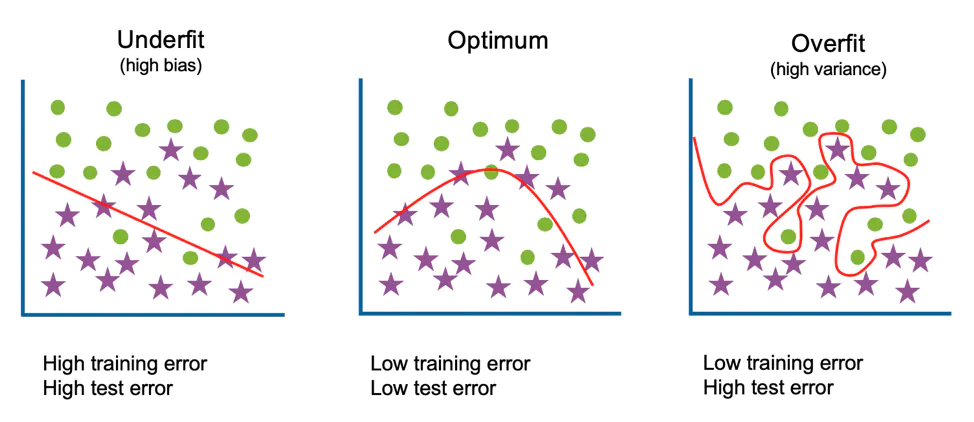Overfitting
What is Overfitting
It occurs when a model fits exactly to its training data. This implies that the model is trying too hard to capture the "noise" in the training data.
Why does overfitting occur?
- Train for too long on training data
- The model is too complex
The model might start to learn the "noise", or irrelevant information, within the dataset.
Noise refers to the data points that don't really represent the true properties of your data, but random chance.
How to Detect Overfitting and Underfitting

Bias/Variance
Overfitting happens when the models capture and describe random noise in the training data set, as well as the underlying pattern in the data. In other words, the training data has low error rate and the validation data has a higher error rate.
Underfitting describes when a model is unable to capture the "true" underlying pattern of the data set (i.e., the model fits the data poorly).
How to Avoid Overfitting
Early Stopping
This method seeks to pause training before the model starts learning the "noise". One major concern is that it might stop the training process too soon, leading to the opposite problem underfitting. Therefore, we need to find the "sweet spot" between underfitting and overfitting.
Train with More Data
Expanding the training set to include more data. This provides more opportunities for the model to learn the dominant relationship between input and output variables.
Data Augmentation can be used to obtain more data.
Data Augmentation
Feature Selection
When you build a model, you will have a number of parameters/features that are used to predict a given outcome. However, some of these features can be redundant to others. (too complex)
Feature selection is the process of eliminating the irrelevant or redundant features that are included in the model while keeping the important ones. It can help to simplify the model to establish the dominant trend in the data.
How to determine which parameters/features to remove?
- Use correlation
- use
p-value
Regularization
If overfitting occurs when the model is too complex, we can try to reduce the number of parameters/features of the model.
Regularization can be used to remove features/parameters from the model when the model has a significant number of features/parameters. It applies penalty to the features with large coefficients, which limit the amount of the variance in the model.